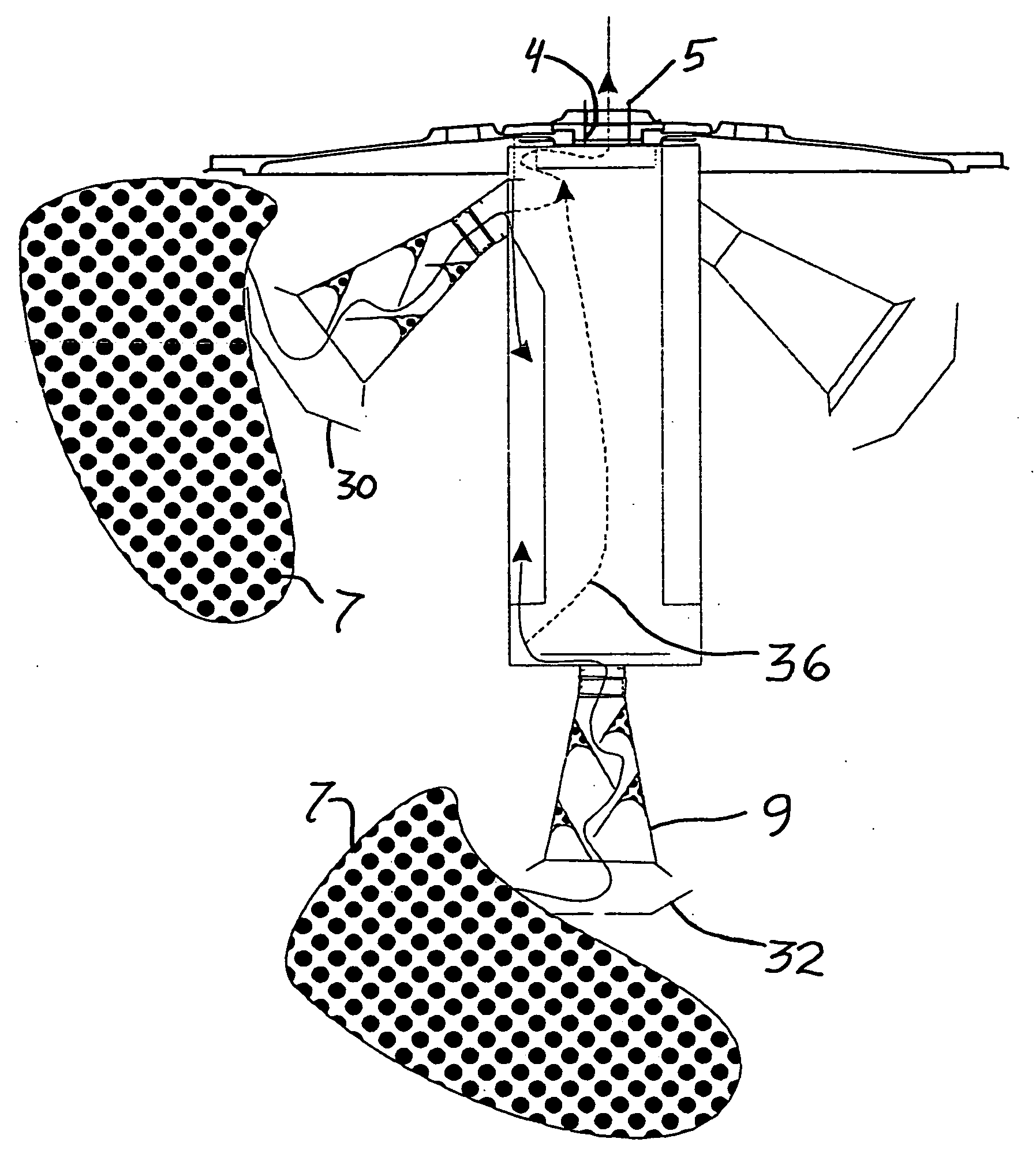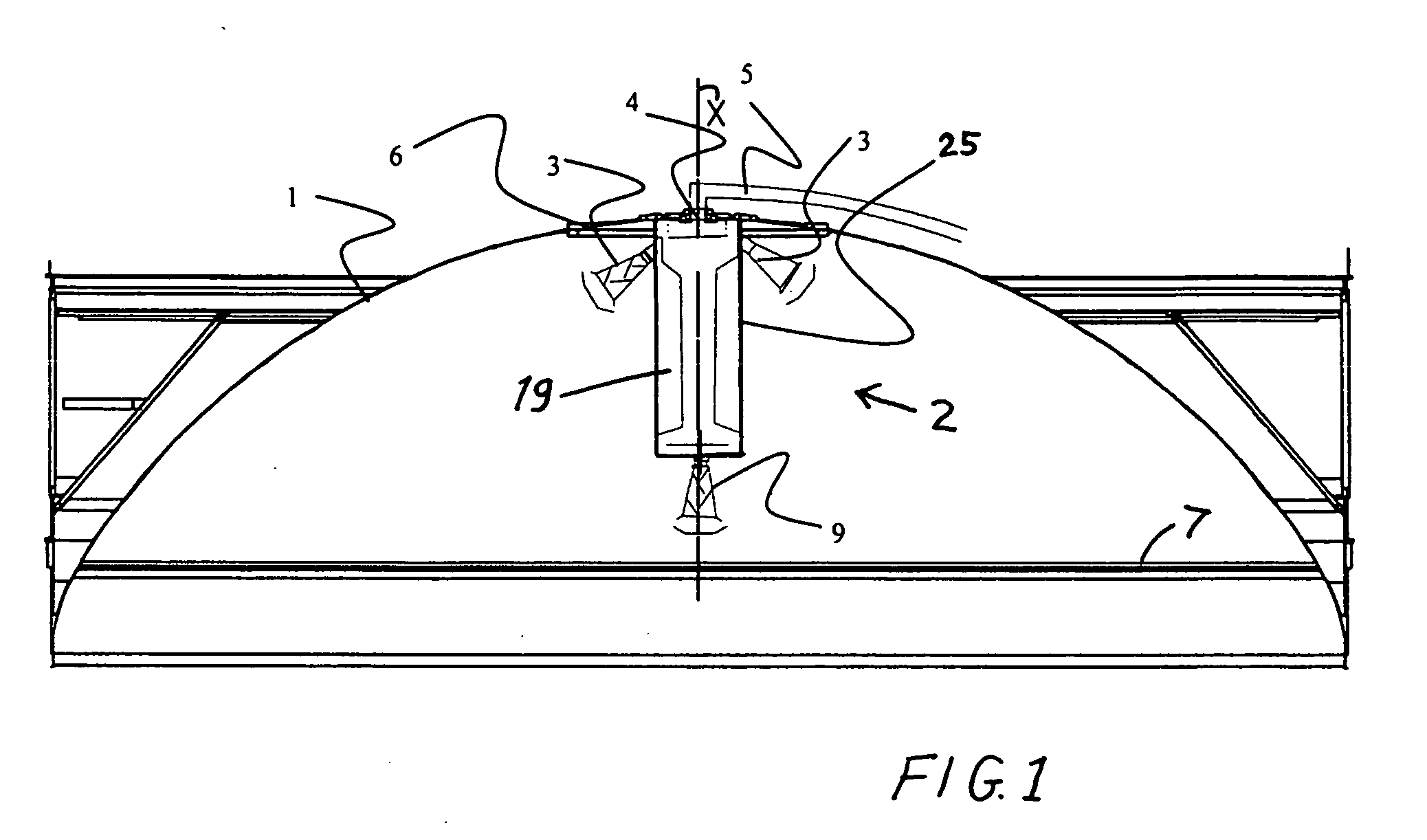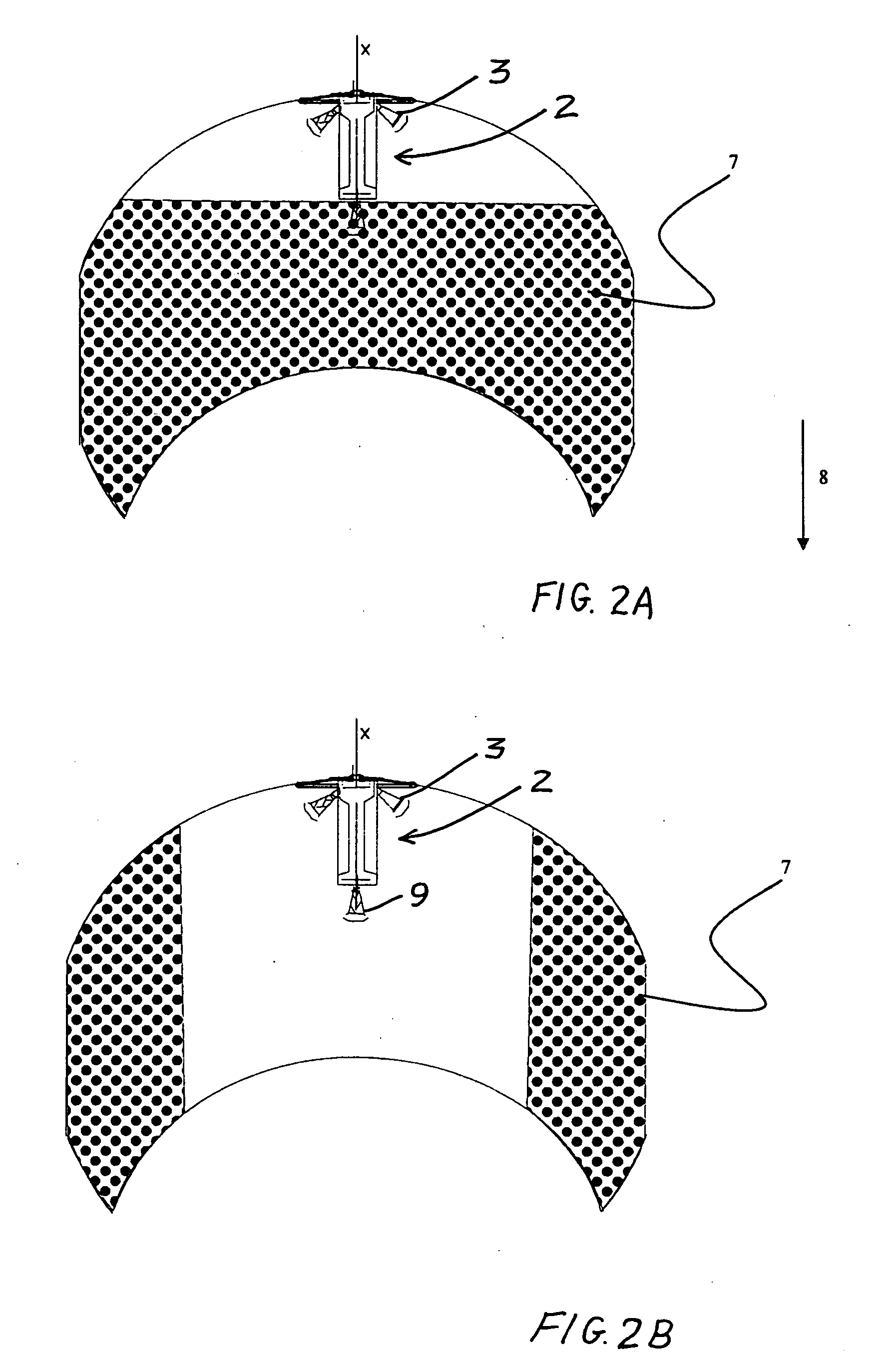[0011]The penetration of liquids into the opening of the trumpet-shaped passage body is substantially prevented by the arrangement of successive capillary plates protruding alternately from opposite sides of the passage body inner wall into the opening of the passage body. The double screen sleeve and a further
wetting barrier leading from the passage body into the interior of the device housing further serve to block the passage of liquid in a preferred embodiment as will be discussed below. Nonetheless, if liquid does penetrate into the interior of the
gas supply and extraction device housing, for example due to larger liquid movements, then the penetrating liquid will be captured and guided away by the capillary plates in the interior of the reservoir and will thereby be separated from the gas.
[0012]Thus, the gas supply and extraction device provided in the tank arrangement according to the invention has the
advantage, with the installed fixed mechanical capillary plates and screens, that it consists of only passive components, i.e. does not require or use any
active components, for example does not comprise any active valves, to carry out the separation of gas from liquid. Therefore, the entire
system does not require any additional or separate controller for controlling the gas extraction device, but rather the separation of the gas from the liquid occurs passively by the fixed
mechanical components. This is a significant
advantage over
gas separation systems that use
active components and require a specialized control, for example systems that require a pre-acceleration for separating the liquid from the gas, or that achieve a phase separation using
active control of valves or using an additional heating and
vaporization of the fuel. Therefore, the tank arrangement according to the invention is characterized by a considerably simplified construction, an increased reliability and robustness, and reduced costs, in comparison to
active systems, and further ensures the liquid-free extraction of gas out of the tank arrangement during phases of reduced acceleration, such as weightless phases or ballistic flight phases, as well as during accelerated flight phases as they arise in connection with the upper stages of rockets and transfer vehicles in space flight.
[0013]It is a special feature of the tank according to the present invention, that it is equipped with a gas supply and extraction device in which the bottom area of the device housing has only one trumpet-shaped or flaring passage body that forms a corresponding flaring opening. More particularly, a single trumpet-shaped passage body that defines a flaring opening is provided centered axially on the lengthwise axis of the housing, on the bottom wall or floor of the housing, of the gas supply and extraction device. Additional trumpet-shaped passage bodies are provided in the upper area of the device housing. This provides an especially simple construction of the gas supply and extraction device, and also achieves an optimum ease and adaptability of the installation thereof, and also optimizes the weight, and the later inspection and maintenance or replacement thereof. The latter is especially an important aspect of the inventive apparatus for application in reusable spacecraft or
spaceflight systems, to which the tank according to the invention is especially well suited.
[0014]A further
advantage of the inventive tank arrangement is that it achieves a very good thermal connection and
heat transfer junction between the gas supply and extraction device and the tank shell or wall structure of the tank. To achieve this, preferably the gas supply and extraction device is directly mounted on or directly connected to the tank lid that covers a tank opening in the area of the upper tank dome where the driving gas predominantly accumulates. In this area of the upper tank dome, the temperature is especially high relative to the temperature of the cryogenic liquid fuel stored in the tank, and the tank shell becomes heated (relative to the cryogenic liquid fuel) especially well by heat introduction (e.g.
thermal conduction) into the tank. Because the gas supply and extraction device, according to the invention, is directly structurally and thermally connected with the tank lid, this arrangement of the gas supply and extraction device additionally performs as a
heat exchanger in the gas outlet area of the tank shell. Thus, the inventive gas supply and extraction device additionally serves to ensure more-constant temperature conditions, especially when the pressurized driving gas (and / or
fuel vapor) in the tank quickly cools-off during a
pressure release from the tank through the gas supply and extraction device. Among other things, this especially has a positive influence on position regulating systems, e.g. thrusters that are operated or driven with the pressurized gas. This effect is especially strong in applications with cryogenic fuels, of which the gas temperature generally increases considerably along with the separation of the gas from the
liquid phase.
[0015]Still further, the inventive direct mounting or connection of the gas supply and extraction device on the tank lid of the tank also provides the advantages of easier installation, maintenance, repair, or replacement of the gas supply and extraction device, and also the advantage that in this manner the gas supply and extraction device can be installed in the tank at a later point in time. This allows the gas supply and extraction device to be later retrofitted onto existing tanks without significant modifications, and also simplifies the tank
verification and approval process. Namely, the necessary
verification tests, for example such as vibration tests to prove the structural strength, integrity and reliability of the arrangement, can thus be carried out on a sub-component comprising the gas supply and extraction device together with the tank lid on which it is mounted, in that merely the tank lid with the gas supply and extraction device mounted thereon simply needs to be clamped into the testing system and vibrated to carry out the vibration test. These tests conducted at the component level are much simpler and therefore achieve a considerable
cost savings in comparison to systems in which the
structural integrity of the entire complete tank arrangement including any gas supply and extraction system arranged in the tank must be tested and verified as a whole, i.e. as a complete tank system rather than on a sub-component basis.
 Login to View More
Login to View More 


